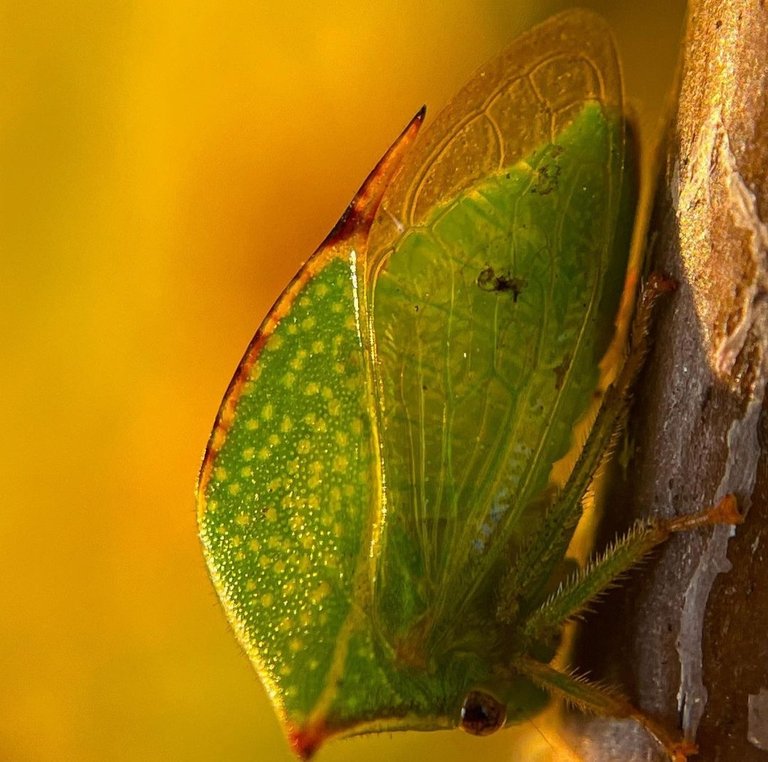
Buckwheat leaf eater
Beetle from the family of leaf-eaters, which has up to 35 thousand. species. Length 4-5 mm. Females differ from males, they are larger, with a swollen abdomen of bright orange color, the wings cover only part of it. In the photo the female. They live on grassy crops. Adults overwinter in the soil or under plant debris. In April-May they come to the surface and start feeding, after 2-3 days they mate.
Mainly associated with the plant mountain bird, because it is the development of offspring and part of the life of adults, also found on other plants of the buckwheat family, such as sorrel. Buckwheat is a biological agent for weed control. Females lay eggs on the leaves of forage plants, the period of oviposition is stretched for a month. The egg is yellow-orange, oblong, 1 mm in size, placed in piles of 20-30 pieces on the reverse side of the sheet. Fertility of females 500-1000 eggs. Yellow larvae. The larvae have 6 simple eyes, short antennae. The larva grows to 7 mm. Before pupation, it descends from the plant and is buried in the soil. The pupa is also yellow, covered with bristles. Full development takes about months at a temperature of +27 degrees, it accelerates.

Thistle bison (Stictocephala bisonia)
Bodushka has become my favorite insect since I saw it this year. This is just the cutest and most unusual insect I've ever met :) It belongs to the family of humpbacks, or thistles, which has 3,200 species. Body length 1 cm. They live in trees and shrubs, are well mobile, jump and fly. Males attract females with trills that are not audible to humans. Adults feed on the juice of white acacia, elm, willow, poplar, walnut.
They live in close symbiosis with ants, as they secrete sweet excrement that attracts ants, which in turn protect the thorns from enemies. They lay eggs from late summer to October. With their thorns they cut a branch and a vine, incisions are paired and parallel, 3-4 mm long. 6-10 eggs are laid in each. Fertility of the female is 100-200 eggs. The eggs overwinter, and in April-May they emerge as larvae, they look like adults, but their body color is brown, and along the back grow thorns with many thorns. They feed on herbaceous plants, preferring clover. Development takes 8 weeks, during this period there are several lines. After that, the adults climb the trees, where they continue their life cycle.

It is a Red mite of the genus Allothrombium. This is one of the most amazing finds of this season. I had never seen such ticks before, and perhaps if I had not looked at each leaf, I might not have seen it at all, because it is extremely small. It belongs to the family of red-headed mites, or Velvet mites, which numbered about 300 species. It stands out among other ticks with a bright color, most often orange-red. Length 3-5 mm. Adults are predatory, feeding on small insects and their eggs. Larvae are insect parasites.
Eggs are laid in the soil, from them emerge pre-larvae, which live motionless due to internal nutrients, after which they turn into larvae, which lie in wait for insects and suck on them for a long time, while greatly increasing in size, satiated, fall off and become dormant. , which then turns into a daytonymph, which is already actively hunting for insects. She, in turn, turns again into a malnourished newt, from which an adult emerges. This is such a complex life cycle.
By the way, an interesting fact is that redflies and their larvae can attack the Colorado potato beetle.
Very impressive difference I love your drawing thanks for sharing